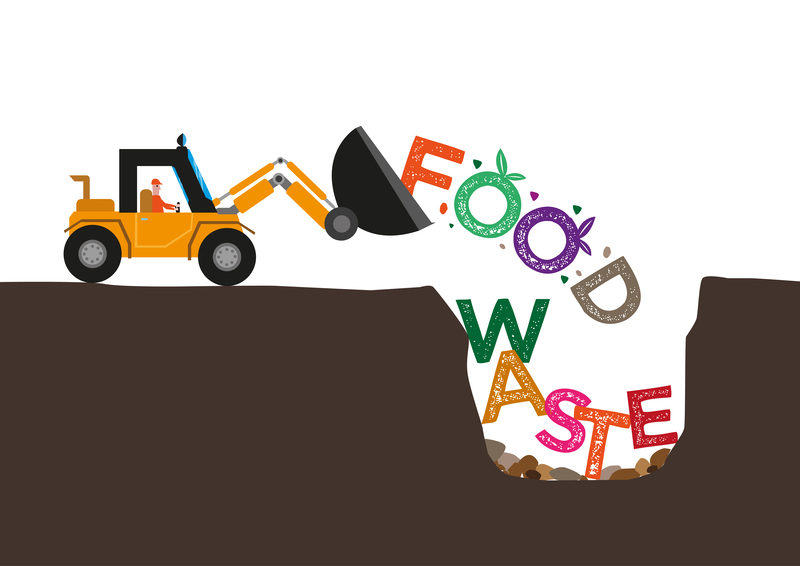Don't Overspend: Master the Art of Bulky Waste Item Savings
Bulky waste disposal is often overlooked in the average household or business's financial plan. Yet, improper management of large waste items can incur unnecessary costs and pose a significant environmental burden. By learning how to save money on disposing of items like old furniture, appliances, and mattresses, you can protect both your wallet and the planet. In this comprehensive guide, we'll explore savvy methods to master bulky waste item savings without compromising convenience or compliance.
Understanding Bulky Waste: What Qualifies as Bulky Items?
Before diving into strategies for bulky waste savings, let's clarify what constitutes "bulky waste items" - often referred to as large or oversized waste. These are generally objects that do not fit into regular garbage bins due to their size or weight. Common examples include:
- Sofas, armchairs, and recliners
- Tables, desks, and dining sets
- Beds, mattresses, box springs, and bed frames
- Refrigerators, washing machines, dryers, stoves, and ovens
- Carpets, rugs, and large textiles
- Garden waste (tree limbs, bushes)
- Large electronics (televisions, monitors)
Understanding what qualifies as a bulky waste item can help you navigate your local regulations and optimize your savings on bulky waste disposal.

Why Overspending on Bulky Waste Disposal Happens
Most homeowners and landlords end up overspending on bulky waste removal because they are unaware of alternatives to traditional disposal. The convenience of curbside collection or private junk removal services often masks their hefty price tags. Additionally, failing to plan ahead can lead to rush decisions - paying premium rates for immediate pick-up or landfill fees without researching other options.
Main Causes of Unnecessary Spending on Large Waste Items:
- Ignoring local free bulk waste collection days
- Overlooking opportunities for reuse or donation
- Paying high fees for landfill or professional removal services
- Not considering DIY transportation to recycling facilities
- Lack of knowledge about community recycling centers
Bulky Waste Item Savings: Proven Strategies
Saving money on bulky waste disposal requires a smart, multi-faceted approach. Here's how to master the art of large item savings:
1. Take Advantage of Municipal Bulky Waste Collection
Most cities and towns offer designated bulky waste collection days where residents can place large items at the curb for free or at a reduced rate. Mark these dates on your calendar and synchronize your big cleanouts accordingly.
- Contact your local waste management department for schedules and rules
- Abide by size, weight, and item-type restrictions
- Prepare and place items properly to avoid fines
Pro tip: If you miss your municipality's scheduled date, reach out for information about next options--they may offer additional pickups or community drop-off events.
2. Donate Usable Items
Many items destined for landfill could still have life in them. Donating furniture and appliances is a win-win: reduce disposal costs and help your community. Numerous charities, thrift stores, and shelters accept gently used large items, sometimes even offering free pickup services.
- Research local charities (Habitat for Humanity, Goodwill, Salvation Army, local mission stores)
- Contact ahead about acceptance policies and pickup services
- Ask for a receipt: donations can provide tax deductions!
3. Sell or Give Away Bulky Waste Items
Your waste may be another's treasure! Platforms like Facebook Marketplace, Craigslist, Freecycle, or local "Buy Nothing" groups offer ways to sell or gift large items. This approach not only increases your savings on bulk waste disposal but can also yield a small profit.
Important tips:
- Take clear, alluring photos to attract interest
- Be honest about item condition
- Request that buyers handle transportation, saving you effort and money
4. Recycle Where Possible
Recycling large items is sometimes overlooked, but scrap yards, electronics recyclers, and local eco-parks often accept bulky items, sometimes for free or at low costs. Metal furniture, mattresses, and appliances contain valuable materials that can be reclaimed.
- Locate the nearest recycling center accepting oversized goods
- Research item-specific disposal guidelines (e.g., mattresses often require special handling due to their materials)
- Check if your city's hazardous waste days include certain bulky items (such as electronics)
5. Pool Resources With Neighbors
If several households have large waste simultaneously, pooling resources for a dumpster rental or a joint pickup can dramatically cut costs per household. This is especially practical in apartment complexes and homeowner associations.
- Coordinate collection dates and share costs
- Ensure everyone follows municipal guidelines
- Organize a neighborhood clean-up event to maximize savings
6. Minimize Future Bulky Waste
The best way to save on disposal is to create less waste altogether!
- Buy high-quality items designed for longevity and repairability
- Repurpose or upcycle old furniture into new forms or uses
- Participate in community swap meets or freecycle days
Comparing Disposal Methods: What's Best for Your Budget?
| Disposal Method | Cost | Environmental Impact | Convenience |
|---|---|---|---|
| Municipal Bulk Pickup | Free to Low | Moderate | High (if scheduled matches needs) |
| Charity Donation | Free (sometimes a tax benefit) | Low/Positive | Medium |
| Recycler / Scrap Yard | Low or may earn small return | Low/Positive | Medium |
| Selling / Giving Away | Free to Profitable | Low/Positive | Variable |
| Private Waste Removal Service | High | High | Highest |
By evaluating these options, you can choose the best path for bulky waste item cost savings based on your priorities and resources.
Hidden Hazards: Fees, Fines, and Regulations
Many municipalities enforce strict regulations regarding the disposal of large items. Failure to comply could result in:
- Fines for illegal dumping or improper placement
- Fees for over-sized items at landfills
- Penalties for discarded electronics or hazardous materials
Read your city's bulk waste guidelines carefully and always clarify with officials if unsure. Knowledge is a key element of both savings and environmental responsibility.
The Environmental Case for Bulky Waste Savings
In addition to monetary benefits, reducing bulky waste landfill contributions supports environmental sustainability. Landfilled furniture and appliances waste resources, produce greenhouse gases, and sometimes leach hazardous substances into soil and water. By maximizing reuse and responsible recycling, you:
- Reduce carbon footprint and landfill use
- Encourage circular economy practices
- Help local communities access affordable goods
DIY Tips: Preparing Bulky Items for Cost-Effective Disposal
Some preparation can reduce costs or even qualify your items for donation or recycling programs.
How to Prepare for Maximum Bulky Waste Savings
- Clean and sanitize items for donation or sale
- Disassemble furniture to save space
- Remove non-recyclable components
- Separate metal from wood or plastic for recyclers
Preparation may seem time-consuming, but it can be the difference between incurring a fee and scoring a free or even profitable removal.
Frequently Asked Questions on Bulky Waste Item Savings
Q: Can I save money by renting a truck for self-hauling?
A: In many cases, yes! Renting a pickup or van for a few hours is often less expensive than paying for professional removal, especially if you're disposing of multiple items or splitting costs with neighbors.
Q: What items are usually not accepted by bulk pickup or charities?
A: Items contaminated with mold, hazardous waste (paints, chemicals), and heavily damaged goods are often ineligible. Always check with the intended recipient or service beforehand.
Q: How do I find my municipality's bulk waste schedule?
A: Visit your city or county's official website and search for "bulky waste collection" or call your local waste management office for up-to-date information.

Case Study: How One Family Cut Bulky Waste Costs by 80%
The Johnson family needed to clear out an old shed and attic before a move. Instead of opting immediately for a private junk haul, they applied these bulky item disposal savings strategies:
- Donated two usable beds and a working fridge (received tax deduction)
- Sold a vintage sofa on Facebook Marketplace
- Brought scrap metal to a local recycler for free
- Used the city's free bulk pickup for non-reusable goods
Total disposal cost: under $50, compared to over $300 quoted for full-service junk removal! Plus, several items found new homes instead of clogging a landfill.
Conclusion: Overcome Overspending & Master Bulky Waste Savings
Waste doesn't have to be wasted money. Now that you know how to save money on bulky item disposal, the smart approach is clear:
- Plan ahead to utilize free or low-cost disposal methods
- Donate, sell, or recycle whenever possible
- Prep your items to meet recipient or service requirements
- Educate yourself on local guidelines to avoid fines
- Minimize future bulky waste with mindful purchasing
Bulky waste doesn't have to bust your budget! By mastering these cost-effective disposal strategies, you'll save money, support your community, and safeguard the environment.